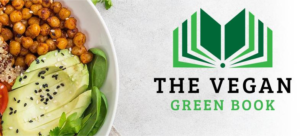Cooking plant-based meals can be a joy—but let’s be honest, it can also eat up a lot of time.
Between all the chopping, rinsing, and trying to balance flavors, weeknight cooking sometimes feels more like a marathon than a mindful experience.
Over the years, I’ve found a handful of simple hacks that have cut my prep time dramatically. These are the little shortcuts and smarter ways of working that keep me sane on busy nights, while still letting me serve meals that feel nourishing and satisfying.
Let’s dive into my go-to tricks.
1. Batch chop your vegetables ahead of time
If there’s one thing that slows down vegetarian cooking, it’s chopping vegetables.
Peppers, onions, carrots, broccoli—they’re all delicious, but they can turn a 20-minute meal into an hour-long event.
I started setting aside one or two times a week—often on Sunday afternoons—to wash, peel, and chop a big batch of produce.
Stored in airtight containers, those prepped veggies make weeknight cooking a breeze. Stir-fry? Already sliced. Salad? Ready to toss. Soup? Just drop them in the pot.
Having vegetables ready to go has saved me countless evenings from falling into the takeout trap.
2. Lean on frozen produce
Have you ever hesitated to grab frozen veggies because they feel like a shortcut?
Here’s the truth: they’re one of the best-kept secrets in vegetarian cooking.
Frozen vegetables are picked at peak ripeness and flash frozen, which means they often hold onto more nutrients than fresh produce that’s been sitting around for days. Plus, no chopping, no peeling, and no spoilage.
I always keep bags of frozen spinach, peas, and edamame on hand. They’ve bailed me out on nights when I have zero energy to cook from scratch.
Toss frozen spinach into pasta sauce, peas into fried rice, or edamame into a salad, and suddenly you’ve got a colorful, balanced dish in minutes.
3. Use kitchen tools that actually save time
One Christmas, my husband surprised me with a good-quality food processor. At first, I wasn’t sure how much I’d use it. Now, I can’t imagine cooking without it.
Tools like a food processor, mandoline, or even a simple garlic press might feel like luxuries, but they shave off so much prep time.
Chopping onions by hand? Five minutes, plus tears. Toss them in a food processor? Ten seconds.
The key is finding tools that match your cooking style. If you love making soups and curries, an immersion blender will change your life.
If you’re all about salads, a mandoline makes paper-thin slices in seconds. Think of them as investments that give you back hours over the course of a year.
4. Cook grains and legumes in bulk
How many times have you skipped cooking brown rice because it takes forever? Or chickpeas because you forgot to soak them? Been there too many times, especially at the start of my journey as a vegetarian.
Fortunately, I got wiser over time. My solution now is to cook them in big batches.
I make a pot of quinoa, rice, or lentils at the start of the week and store them in the fridge. Sometimes I even freeze extra portions in flat bags so I can defrost them quickly.
When the grains are already ready, half the battle of dinner is won. A grain bowl with toppings, a quick stir-fry, or a hearty soup all come together much faster. It’s one of those habits that feels like extra work on the front end but pays off all week long.
5. Embrace one-pot and sheet-pan meals
Do you ever get tired just looking at the stack of dishes waiting after dinner? That’s where one-pot and sheet-pan meals come to the rescue.
Vegetarian cooking doesn’t always need ten separate pans to create flavor.
In fact, some of my favorite meals come from tossing a mix of vegetables, chickpeas, and spices onto a sheet pan and roasting everything together. Or simmering lentils, tomatoes, and greens in one pot until the flavors meld into something rich and satisfying.
It’s not just about less cleanup—it’s also faster. With fewer steps, you can move from chopping board to table in record time. And honestly, there’s something cozy about letting the oven or stovetop do most of the work for you.
6. Flavor with pantry shortcuts
I used to spend ages trying to build flavor from scratch every single night. Then I realized my pantry could be my best ally.
Jarred pesto, good-quality curry paste, tahini, canned coconut milk, or even a splash of soy sauce can transform plain vegetables and grains into something that tastes restaurant-worthy.
The trick is not relying on them exclusively, but using them to cut down on prep when you’re short on time. I once threw together a meal of chickpeas, roasted zucchini, and quinoa, then drizzled tahini over the top.
Dinner was on the table in 15 minutes, and it tasted like I’d spent hours.
7. Wash as you go
This last one isn’t about cooking faster—it’s about making the whole experience feel lighter. Because what really slows you down is looking at the mountain of dirty dishes after you’ve finally sat down to eat.
I started washing cutting boards, knives, and small bowls as I go. It only takes a minute here and there, but by the time I’m done cooking, the kitchen is mostly clean.
It makes cooking feel less like a chore and more like a flow. And when the process feels smoother, I find myself more willing to get into the kitchen, even on busy days.
Final thoughts
These little hacks don’t require fancy techniques or endless effort. They’re small shifts that add up, saving you time while keeping your meals fresh, colorful, and nourishing.
Vegetarian cooking can be simple, joyful, and even quick—if you give yourself permission to work smarter, not harder. And the more ease you bring to your kitchen, the more you’ll enjoy the food you create and the moments you share around the table.

